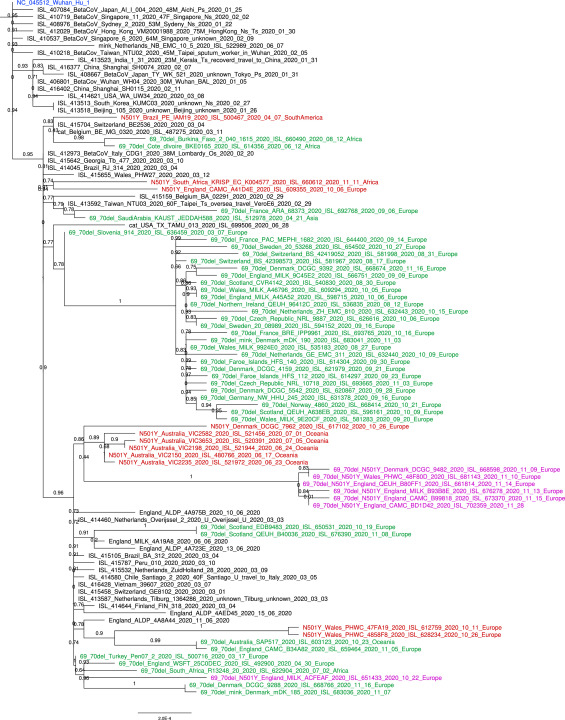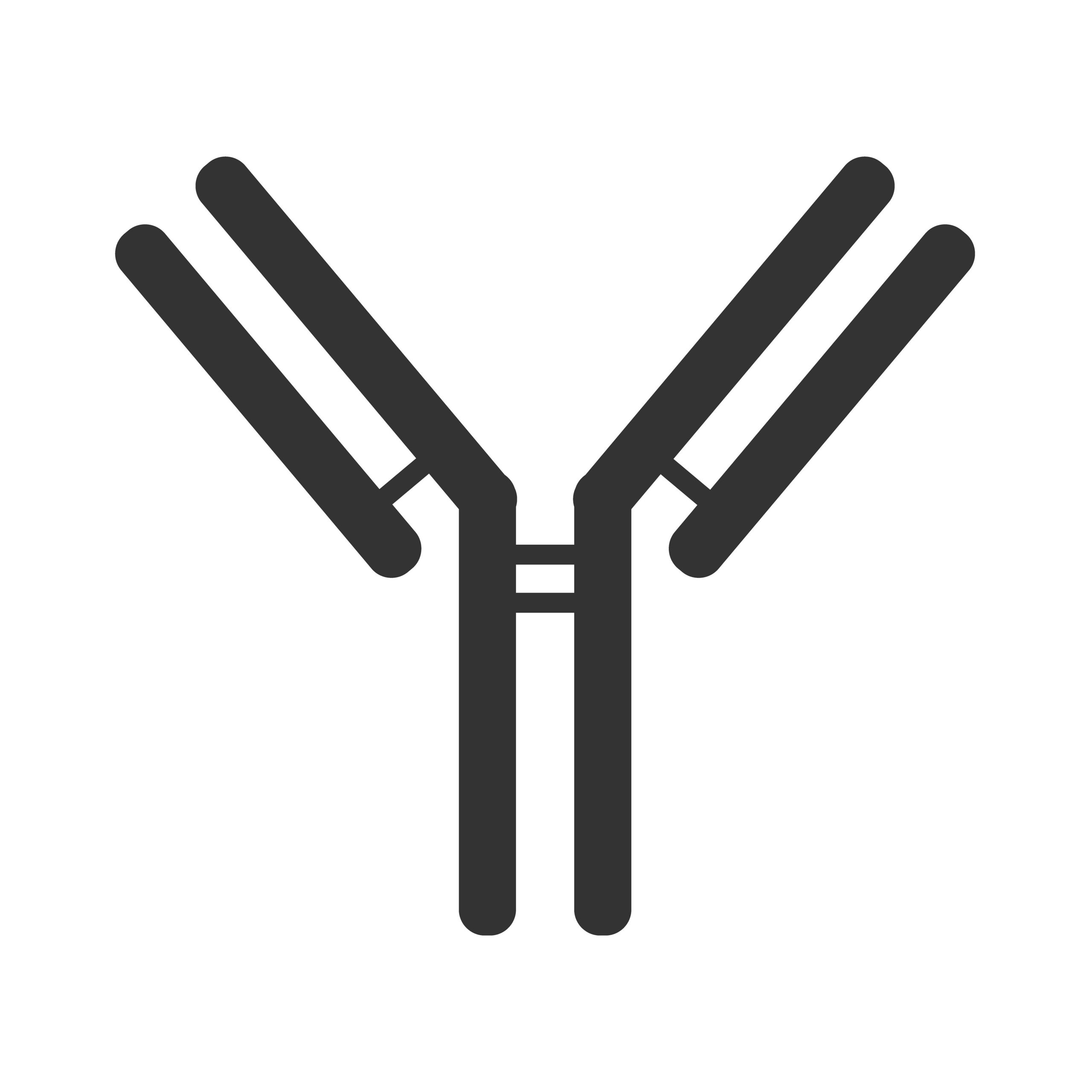B1.1.28 and B1.351 – They Are All ‘Johnny Foreigner’ Variants To The Government.
In recent months, the government has made much of the emergence of new ‘killer mutations of death’, obsessing about ‘South African’ and ‘Brazilian’ geographical variants. Before going further, one should refer to these variants by their correct designations: the Brazilian variant is B1.1.28(E484K) and the South African is B1.351(N501Y). The latter part of their respective designations – the amino acid substitution – is crucial, as will be explained below. Incorrectly referring to the variants by country is misleading as it ignores their similarities and tries to make out they are different and are distinct to a single country.
The idea that SARS-CoV-2 is somehow geographically derived, constrained by international borders and adopts national identities is plain wrong. It does pander to a subconscious bias of xenophobia, implying ‘Johnny Foreigner’ virus is about to come to the UK and bring its bad habits with it. Blame the South Africans, blame the Brazilians, blame [insert your choice of country name here]. In reality these are just variants where a specific genetic variation has been detected in one country while simultaneously already existing in others.
The United Kingdom has B1.1.7 (also known as S-VoC / SGene Target Failure / SGene Dropout), as we have previously described here. This highlights the hypocrisy in trying to make out that ‘Johnny Foreigner’ variants are bad when one of them has been present in the United Kingdom for almost a year.
As we outlined back in January, coronaviruses are acknowledged as having a high level of variation, principally around the structural spike protein domain. This is antigen shift and part of SARS-CoV-2 natural defences. Just one A→G single nucleotide polymorphism (SNP) allowed SG614 to replace SD614 as the global, fixed variant between March-June 2020. With the majority of the 1,963 variants per day being SNPs, if you understand SARS-CoV-2 then you expect variants.
- B1.351 has a haplotype consisting of three amino acid substitutions in the S protein domain: K417N; E484K and N501Y [Tang et al., 2021].
- B1.1.28 has a haplotype consisting of two amino acid substitutions in the S protein domain: E484K and V1176F [Nonaka et al., 2021].
- B1.1.7 has a haplotype consisting of N501Y and ΔH69/V70 deletion [Volz et al., 2020].
Note that glutamic acid to lysine substitution E484K appears in both ‘South African’ and ‘Brazilian’ variants. So they are more similar than different.
Note also that asparagine to tyrosine substitution N501Y appears in both ‘South African’ and ‘United Kingdom’ variants. So they are more similar than different.
Any attempts to portray strains as geographically exclusive are disproved further by the existence of the N501Y substitution in Brazil in April 2020; Australia in June 2020 and both Denmark & the United Kingdom in October 2020, all before it was detected in South Africa in November 2020.
In addition, indel ΔH69/V70 was already in Thailand (January 2020); Germany (February 2020); Slovenia & Turkey (March 2020); the United Kingdom & Saudi Arabia (April 2020); Burkina Faso & Cote d’Ivoire (June 2020); the Czech Republic (August 2020); France & Denmark (September 2020) and Switzerland (October 2020), all before it was detected in B1.1.7 in November 2020. This reflects the work of Kemp et al. [2020] that established the frequent occurrence of indel ΔH69/V70 within SARS-CoV-2 phylogenesis.

Phylogenetic tree of SARS-CoV-2 showing diversity of N501Y substitution and ΔH69/V70 deletions (courtesy of GISAID).
One is seeing SARS-CoV-2’s adaptive camouflage at work in the form of dynamic glycan shielding of the spike protein domain, achieved through single nucleotide and amino acid substitutions. There is nothing geographical about it.
The ‘Brazilian’ Is No More Dangerous Than The ‘South African’.
Toovey et al. assert that B1.1.28(E484K) does not have greater infectivity than either dominant, fixed global variant SG614 or B1.351(N501Y). This mirrors our analysis and conclusion from January 2021 that B1.351(N501Y) does not have greater infectivity than SG614. There is suggestion B1.351(N501Y) and B1.1.28(E484K) may be more infectious, although their known existences for 11 months and 7 months respectively [Bello and Siqueria et al., 2021] and failure to become dominant does not support this view. It is likely that the primary amino acid substitutions relate to SARS-CoV-2 attempting to maintain a fitness advantage* through increased infectiousness but this is offset by secondary SNPs within the variant. For example, B1.1.28’s E484K substitution is accompanied by four SNPs across the genome: C100U; T10667G; C11824T; and G28628T. The concomitant nature of these secondary SNPs may be to stabilise the genome and/or support the fidelity of the amino acid substitution.
*Fitness advantage in simple terms equates to higher infectiousness. This is not higher infectivity. The crucial difference between infectiousness and infectivity is set out here.
It is particularly noteworthy that indel ΔH69/V70 was already in the United Kingdom over six months before B1.1.7/S-VoC was detected and designated ‘Variant of Concern.’
It Is Most Certainly Not Location, Location, Location.
The commonality of E484K and N501Y substitutions across geographical designations is proof that SARS-CoV-2 does not create variants based upon location. Variants are created continuously to offer fitness advantage through natural selection. Naming variants geographically and inferring that individual countries are responsible for individual variants is misleading and incorrect.
It also highlights the fallacy of travel corridors, risk labels for travel destinations and stigmatising individual countries. On this basis, the United Kingdom should be considered as a high risk destination on account of B1.1.7/S-VoC sharing haplotype with B1.351(N501Y) and indel ΔH69/V70 having been present here since April 2020.
Geographical naming of variants shows the ignorance and non-competence of the UK government and Public Health England.
The fact that these haplotypes are almost exclusively contained with the spike protein domain further shows the inherent drawback in focusing upon the S protein as the target for vaccine and antiviral candidates.
